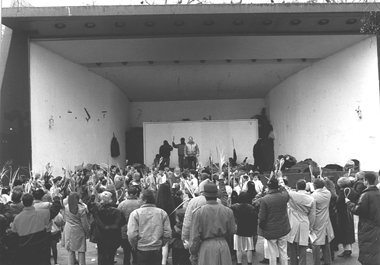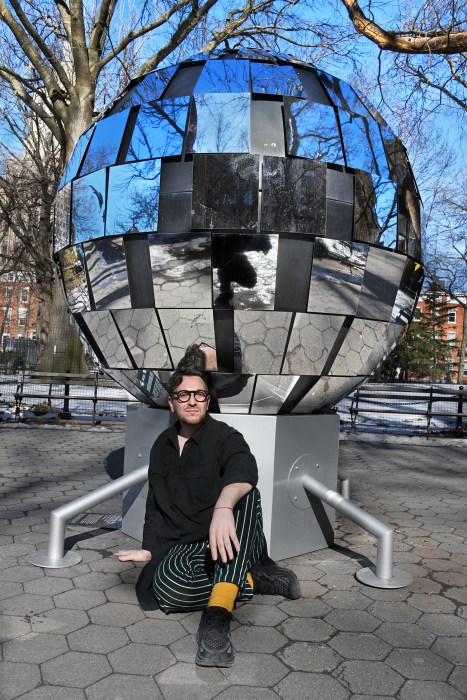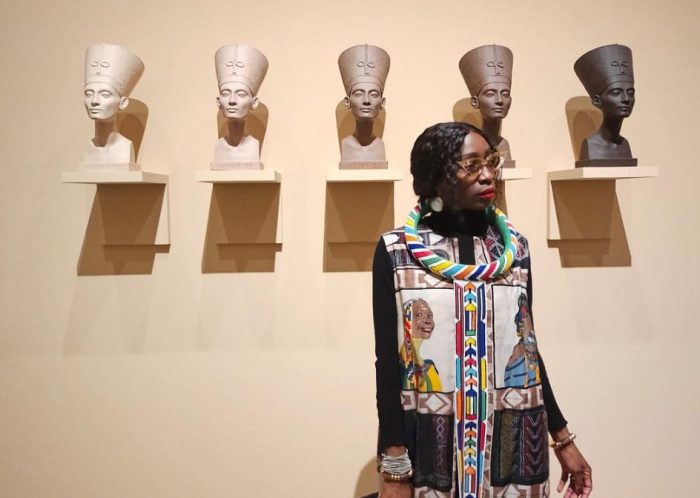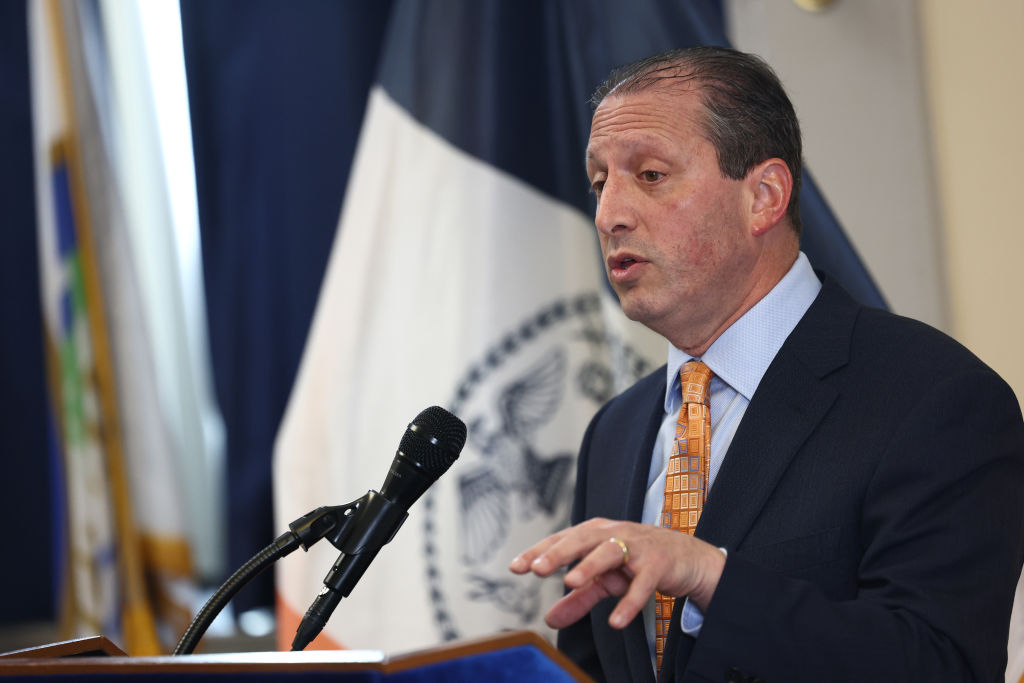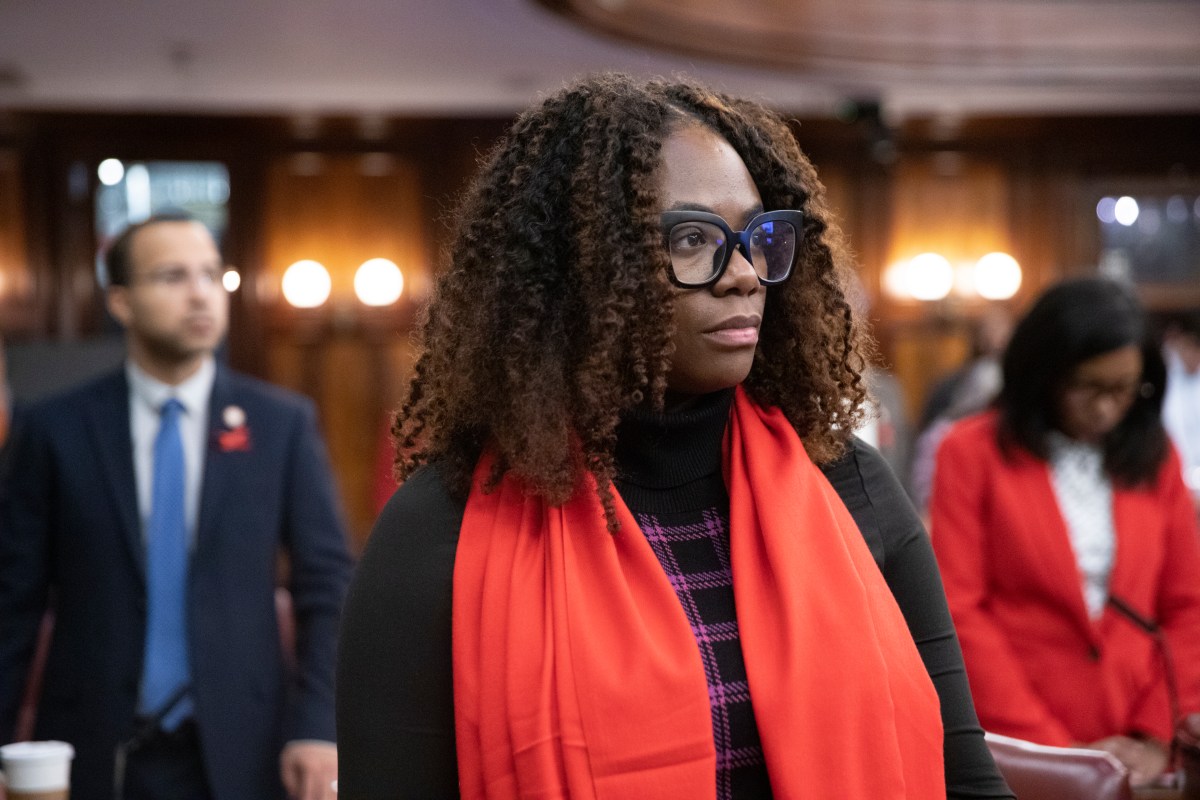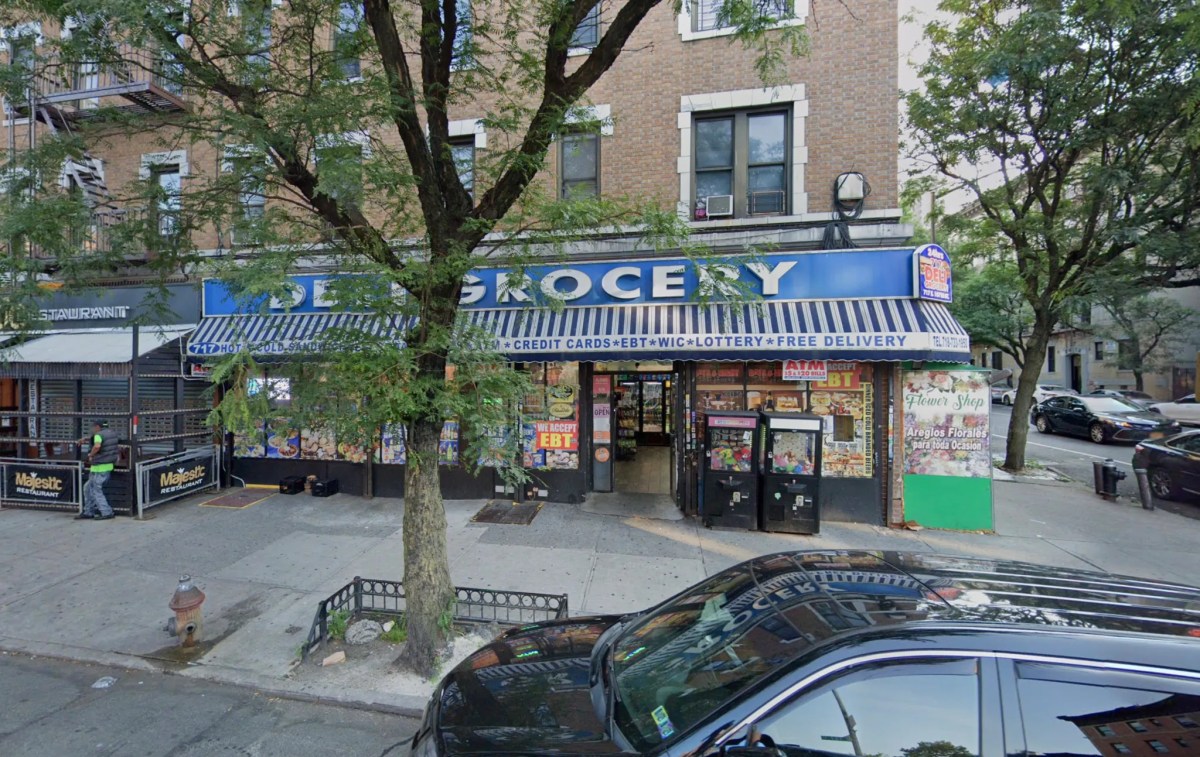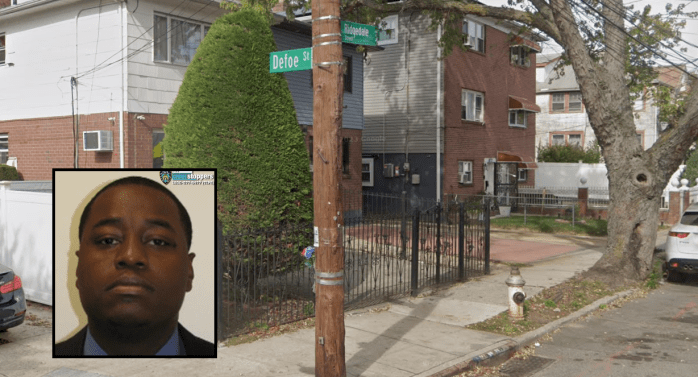By Lincoln Anderson
Eric Drooker remembers when he was 7 years old and growing up in the East Village and noticed a new structure taking shape in Tompkins Square Park.
“I think it was 1966,” he recalled. “I remember seeing this strange thing get built. I thought it was a house. My mother told me it was a shell. I was thinking it would be like a giant seashell.”
Drooker went on to become a highly accomplished poster artist whose work has appeared on the cover of the New Yorker, while the Tompkins Square Park band shell, though short lived, went on to become the cultural and nerve center of the park.
Drooker vaguely recalls something about the band shell having been built to ease neighborhood tensions between the area’s mainly Puerto Rican residents and the influx of young hippies who were turning the neighborhood into Haight-Ashbury East — though the response would doubtless have been the same no matter what ethnic group lived there, he said.
Top musical acts who were playing shows at the nearby Fillmore East and Anderson Theater often stopped by to jam at the band shell. The early Grateful Dead performed there in 1967 and Sun Ra and his Arkestra did a legendary show there in 1978. Poet Allen Ginsberg and jazz artist Ornette Coleman also took to the stage of the band shell, as did Jimi Hendrix and the Jefferson Airplane.
The start of the demolition of the band shell at the end of summer 1991.
But the band shell’s days were numbered. By the late 1980s, it had become a homeless shelter, with 40 to 50 people sleeping in it, as well as Alphabet City’s largest urinal. In addition to the homeless, it was increasingly used by neighborhood activists and squatters as a rallying point. Following a major riot in 1988 over imposing a curfew on the park and another big one in 1991 that started at the band shell — which some accuse police of instigating — a few months after the last riot, the park was closed for a year for a renovation. One of the first things done was to demolish the band shell.
“It was never nice to look at, but it was functional,” Drooker said of what was essentially a concrete box with built-in lights, speaking from Berkeley, where he now lives most of the year. “I think the line of the city was that it was structurally unsound. I knew that was nonsense, because the thing was not very old. It was one of the newer structures in the neighborhood. Afterwards, they put up a volleyball net there — it was symbolic of gentrification.”
Chris Flash, publisher/editor of The Shadow, the East Village anarchist newspaper that was founded in response to the riots, said the message of the stage’s removal was clear.
“They wanted to change the patterns of the park, make it more policeable — how you now have cars driving around where they couldn’t fit before,” he said of the park’s renovation. “They felt the band shell was a rallying point.
“There was an electrically operated roll-down gate” on the band shell, he recalled. “If they had wanted to keep the homeless out, they could have fixed the goddamn gate. But the larger goal was to wipe out homelessness and wipe out a rallying point and center for activism. It was a psychological blow to the neighborhood: ‘F—k you, we’re taking this out.’ ”
Today the barren asphalt space where the stage once stood is often empty, though also sometimes used by parents to kick around a soccer ball with their young children or for little kids to learn to ride a bicycle. The Hare Krishnas also pray under a tree they consider sacred in this area of the park. For events, a temporary, rent-a-band shell for which users must pay a $450 fee is wheeled in by the Parks Department.
Now, however, almost 15 years after the band shell’s razing, some of the activists who vainly protested its destruction soon plan to launch a campaign to rebuild it in the same spot.
As Frank Morales, a pastor at St. Mark’s Church in the Bowery and writer on the “police state” beat for The Shadow, put it, “We’ve been good. We haven’t rioted. We deserve the band shell back.”
“I seem to remember it always being there,” said Morales, who, like Drooker, grew up in the neighborhood. “I saw the Fugs there, the Bloods, recollect Santana, Ginsberg, of course, Patti Smith, Valerie Solanis — the chick who shot Warhol.”
From 1984 on, Morales and fellow squatter Jerry “The Peddler” Wade would go to the Parks Department office and “sign up for as many shows as we could,” Morales recalled of using the band shell. “No fee, no insurance, it was easy. Juice was live from the rear wall, no generators necessary. Often people would just show up, plug in and play. Imagine that — free music and speech, in a 24-hour park!”
Band shell bummer
John Penley, another neighborhood activist, was among a handful of people arrested protesting when the band shell was bulldozed early one morning at the end of the summer in ’91.
“What happened was some squatter kid named Seth threw a super-M-80 at some cops as he rode by on his bike,” he recalled. According to Penley, the police roughed up the squatter, Penley yelled at a police captain and got arrested.
“The band shell was a real central point for the people to get together,” he said. “And it allowed people to put on things for very little money.”
Bringing back the permanent stage makes perfect sense and isn’t something to worry about, Penley said, since A) homeless people can’t live in the park anymore, B) it could have a roll-down gate to close it when not in use and C) riots simply aren’t going to happen again.
“Most of the issues that people rioted about were squatters and housing, and those issues have been dealt with one way or another,” he said. “Let’s face it, these yuppies who are in the neighborhood now are only going to riot if they can’t go to their bar on Saturday night.
“I’ve spoken to a broad cross-section and nobody thinks that they shouldn’t rebuild the band shell,” Penley continued. “Some people might say there’s a noise problem — but it actually channels the noise into the park and away from Seventh St. From May till the end of summer there’s an event in the park every weekend. Having a band shell is not going to cause more events. It’s just going to save community groups a lot of money. And it’s going to look better than what’s there now.”
Flash echoed Penley, saying, “The park really needs an alternative performance space, whether it be for the Christians, punk rockers, salsa, anything. It should be there for everyone to use.”
Apart from the neighborhood’s activists and former squatters, a polling of some individuals involved with community organizations and the park found a range of responses from very favorable to cautious about returning the band shell.
FEVA exec favors it
Joseph Pupello, executive director of the Federation of East Village Artists, which puts on the annual HOWL! Festival of East Village Arts in the park, said while his board hasn’t had discussions on the idea, it sounds good to him and would be a real cost saver. Renting and operating a special, large soundstage for last summer’s festival cost $25,000.
Another view of the band shell, with police in riot helmets standing watch.
“My personal position is it sounds exciting,” Pupello said. “I love the idea of a formal, stated gathering place in Tompkins Square Park. For us, during the HOWL! Festival it would be awesome. I think it would be wonderful to have a design contest for it. But bringing it back brings along a panoply of responsibilities. It can’t be ignored. You have to maintain it. That’s what happened before. It didn’t exactly smell very good. People peed on it.”
Michael Rosen, a founding member of the East Village Community Coalition, which has been fighting to landmark the old P.S. 64 building on E. Ninth St. and stop a 19-story dormitory from being built on the site, also was bullish on the band shell.
“This is the first I have heard of this. I do miss the old band shell,” he said. “I thought it was fantastic. In Tompkins Square, it’s very clear that demolishing the band shell wasn’t just park design. It was political design — to make sure that a permanent space for performance wasn’t there. It’s an inconvenience to have to import a stage. And it never has the presence of the original band shell. What they did is restore the park but they didn’t restore the band shell.”
But Roland Legiardi-Laura, a member of E.V.C.C. as well as the East Village Parks Conservancy, a community group that fundraises for the park and whose newsletter is sent to 1,200 people, said E.V.C.C. hasn’t formally discussed the proposal. As for his own view, he said, “I’m somewhat neutral on it. At times the old band shell served as a shelter for homeless people. Behind it was sort of an ominous dark space, and it made that end of the park feel somewhat cut off from the rest of the park. I’m sure a new structure would be more elegant. But until there is a design, I don’t think we need to sign off on it.”
Gehry could design it
Another member of the parks conservancy, Ellen LeCompte, was also skeptical of the notion.
“I know there are a lot of people that would like that space back,” she said. “A number of my friends who are performers would like it back. But I myself like it gone — unless we can get a really fabulous design by an architect like Frank Gehry. And if it were smaller. Plus, it’s quite a beautiful spot. We’ve got those beautiful American elms there. It’s such a good park that to throw up another concrete shell, I think, would be a mistake.
Of course, a push to restore the band shell would need the support of local leaders.
Lisa Kaplan, chief of staff to Rosie Mendez, the East Side’s new city councilmember, said it would be premature for the councilmember to weigh in now since there hasn’t been an informational forum on the subject yet, but that it could be something Mendez conceivably might support. Kaplan said she spoke to Mendez — who was in preliminary budget hearings on Tuesday when The Villager called — about it but that Mendez was tied up all day.
“She hasn’t had a chance to really examine this issue,” Kaplan said. She said Mendez would need to sound out the community’s sentiment first and that the band shell should not be privately funded or “privatized,” but publicly funded and accessible to the community.
“She doesn’t see anything wrong with a band shell that would be well funded and well maintained and accessible,” Kaplan said. “But she’d like public input on it, and she wouldn’t support it if the community doesn’t want it.”
David McWater, chairperson of Community Board 3, did not reply to several requests seeking his opinion on the matter.
Ultimately, the Parks Department would need to approve the plan. Warner Johnston, a Parks spokesperson, said, “The band shell was originally removed due to its severe deterioration. Currently, a portable band shell is available for a reasonable fee of $450.
“There are few large open spaces in this park and neighborhood. The area where the preexisting band shell was located is used for many performances and gatherings. By using a portable band shell, we are able to have flexible use of this space for a variety of purposes.”
However, Penley said the asphalt area where the band shell was located is “never used.” And he said a new band shell wouldn’t take up as much space as the old one, which, he admits, was “very ugly, but served its purpose.” He agrees a design competition would be a great idea and says some local architects have told him they’d design the new band shell for free just to see their work in the park.
“I’m talking about having a really nice, attractive band shell that would add to the park,” Penley said. “We are going to do a P.R. campaign this summer on this. I’ve spoken to people from all economic levels and they really support this. And I believe that eventually it will be rebuilt.”



